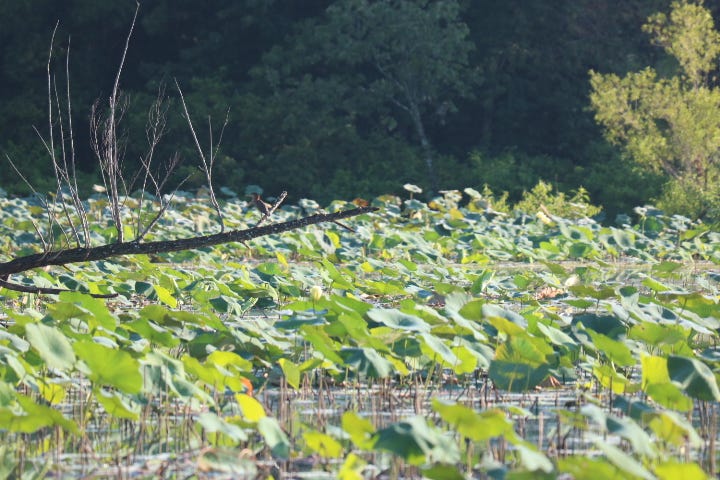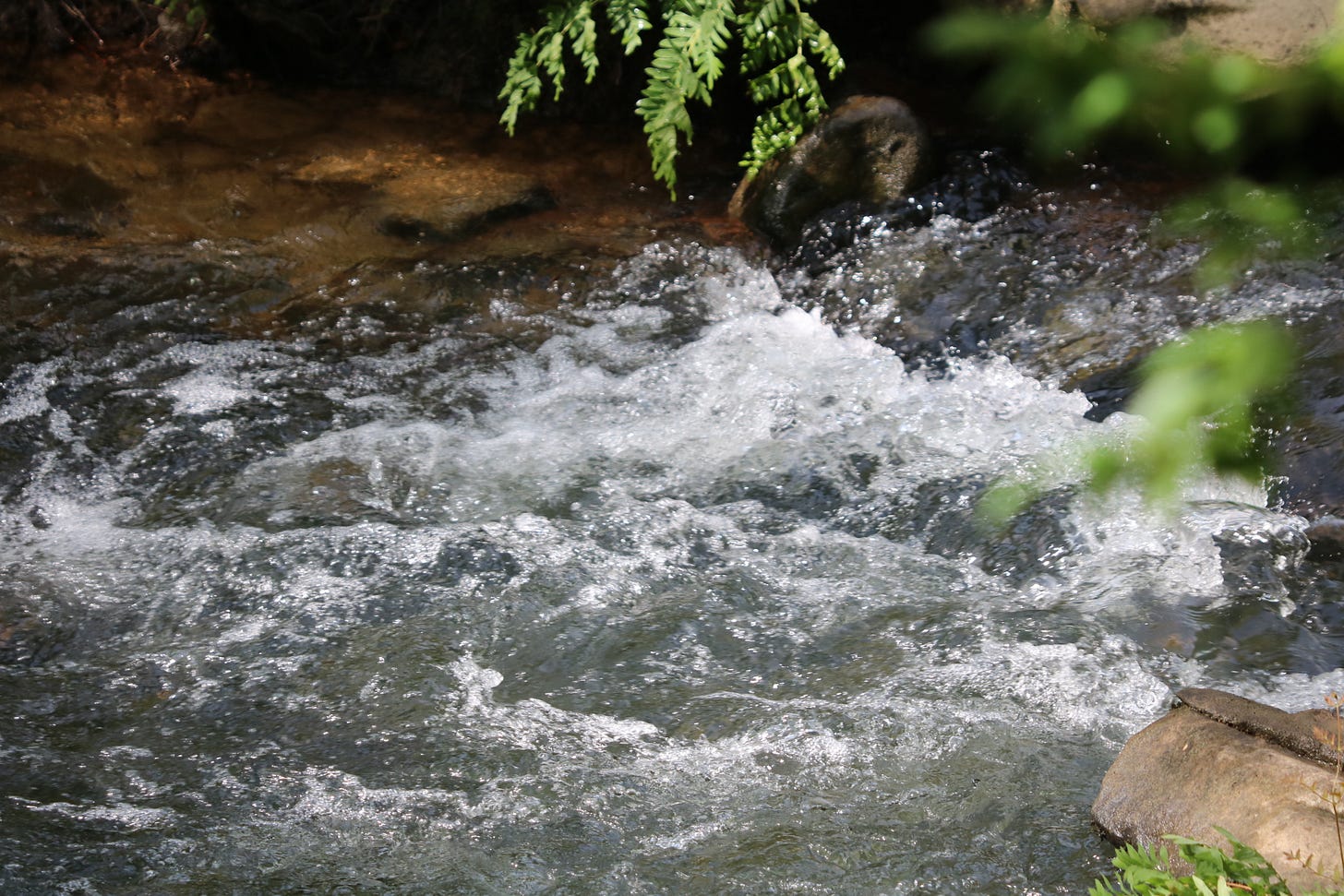America Lotus plants at Amnicola Marsh.
It has been a dry year, with little rain since last summer. A week ago, we had a false fall that gave us a break from the heat, with temperatures staying below 90 degrees Fahrenheit, but the only real rain I can remember in the past year came on a Wednesday night in May. Tornados passed nearby and rain filled the creeks. My workplace was closed due to flooding all day that Thursday, but the next day, the waters receded.
I have spent the early hours of the day outdoors, while the temperatures are still in the seventies so, on Wednesday, I made a trip to Chickamauga Dam and Amnicola Marsh. I know I was visiting developed recreational areas with the wildlife a mere remnant of what once thrived here, but it was a chance to observe a bit of wild nature within an urban setting. Even in areas, I feel the healing touch of nature and value my time spent there.
I arrived at the dam around 8:00 and noticed no one fishing from the pier. Three people were fishing from the shore and two were in a boat. One Great Blue Heron sat on the railroad trestle and one on a platform that supported an abutment. A train crossed the bridge and spooked the herons away to join three that worked the shoreline. This is a marked contrast to days when dozens of people line the fishing pier, and dozens of herons stand on the bank.
Ospreys flew upstream and over the dam without stopping to fish. A flock of pigeons flew upstream to land on the dam as cormorants rested on the rocks near the far shore. A few swam and dove for fish and a vulture glided downstream looking as though it had decided to imitate a fishing eagle.
By 9:50, I left Chickamauga Dam bound for the marsh. I skipped possible stops at the Riverpark and the access point at Lost Mound Road, saving these points of interest for another day. The Riverwalk, a paved walkway suitable for cycling and service vehicles, connects these two points to Chickamauga Dam, Amnicola Marsh, and the downtown riverfront. Many people use this path and enjoy frequent views of the river.
At Amnicola Marsh, the shoreline has receded even further, leaving the area looking more like a marsh than the large pond it has been since the construction of the Riverwalk. An earlier story about the dry conditions here appeared on Substack: https://substack.com/@znaturalist/p-146462175.
I walked out into normally wet territory and photographed a Great Egret in the marsh. The number of these birds has declined in the past weeks. Perhaps they have exhausted the abundant fishing created by low water and moved on. I also saw two Killdeer and a Red-shouldered hawk fly over. I stopped to photograph a wildflower for iNaturalist identification and sank into the mud a bit. At the car, I put plastic bags under my feet to protect the carpet on the drive home.
Back in my neighborhood, I saw a neighbor who regularly explores natural areas. I told him I was planning a trip to Big Soddy Creek and invited him to come along. He readily agreed and we departed after lunch. I welcomed the time between to clean up my shoes, socks, and legs and take a short nap, having been awake since four O’clock.
Big Soddy Creek in wet weather, 2019.
The trip up was uneventful, but the creek was disappointingly low. Ares normally full of water had become a rocky stream bed with puddles. Only a few of the usually abundant Royal Ferns greeted my eye.
The first swimming hole had slack water with no flow. It was crowded with swimsuit-clad families, one of whom had brought a radio. The rocks and trees seemed unimpressed with the music brought by visitors who may not have noticed the natural beauty. That first swimming howl is a popular fishing spot at other times.
That first swimming hole is a popular fishing spot at other times. Chattanooga author Paul Luikart has referenced fishing here in one essay and frequently writes about fishing. You can read his Substack story about fishing on the Tellico River here, https://substack.com/@paulluikart/p-148076699.
Given my allergy to crowds, we continued on the trail to find another swimming hole. We found an isolated pool where a large boulder stood sentry. I admired the small fish in the pond but saw none of the stocked trout or native bass. A small pool near the far shore was deeper than my 5’4’’ height. A plunge into its depths was like stepping into a walk-in freezer. I speculated that the pool may have been spring-fed.
The hours I spent at this pool justified the walk back in wet swimming trunks. It was the sort of place one could love enough to build a cabin, put in a garden, fish the stream, and forage for wild game and edible plants, at least in bygone years. In contemporary culture, such dreams are considered foolishness.








I really enjoyed this tour of your local natural areas. There’s still some nature out there, and while it’s nice that people are out enjoying it, I too have an allergy to crowds :)
You might appreciate my most recent post about Walden Pond. I’m fortunate that it is only 15 minutes from me, but, like you say, few have the desire to build a cabin and live near the land these days. I wonder how different our society might be if we could all do that?
Bring the rain! And aren’t the royal ferns glorious!